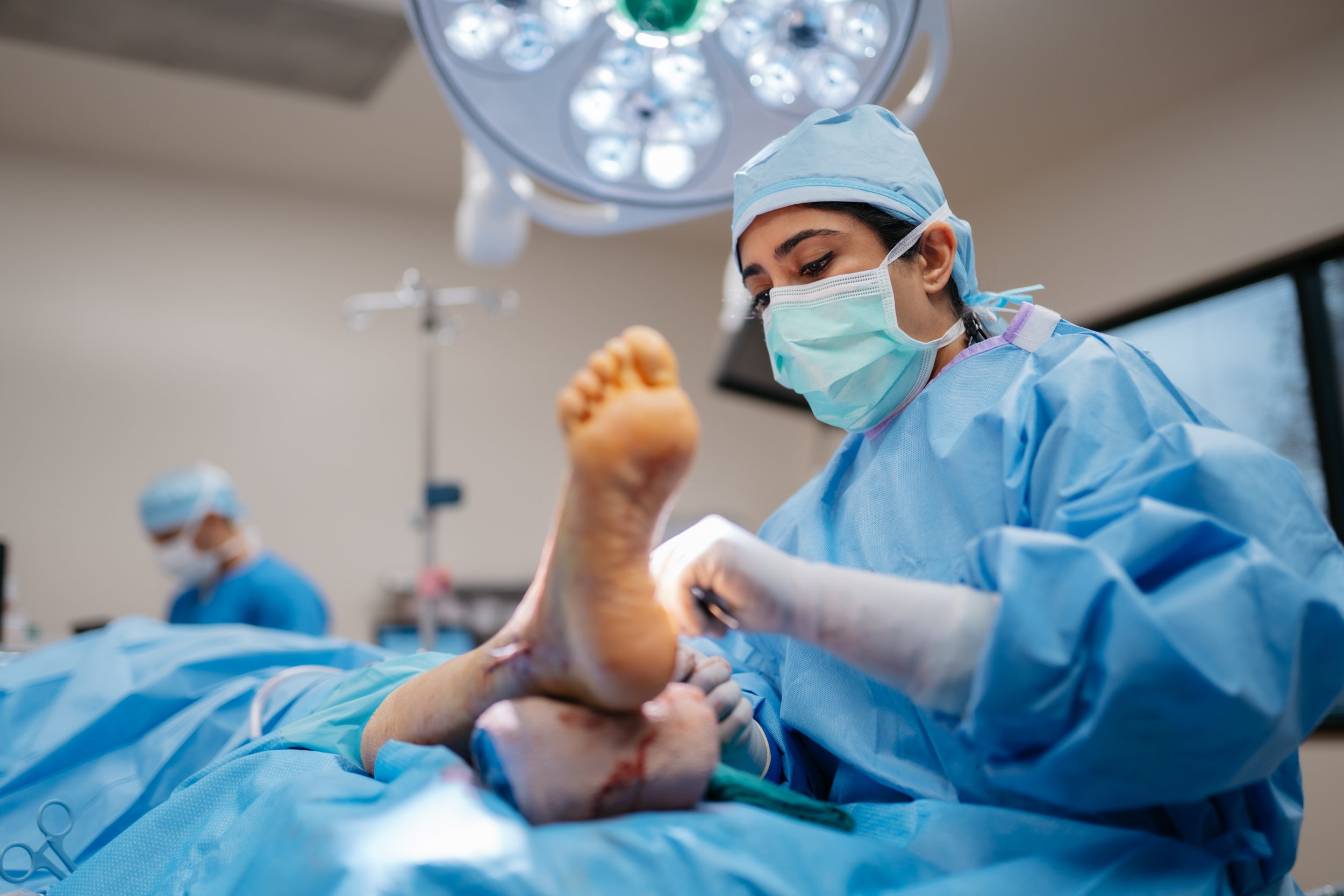What Is the Recovery Timeline for Ankle Replacement Surgery?
Ankle replacement surgery replaces a damaged ankle joint with a prosthetic implant, helping reduce pain from arthritis or injury while restoring mobility and range of motion. This procedure can greatly improve daily function and comfort.
Recovery is a gradual process, divided into phases that include non-weight-bearing, partial weight-bearing, and full weight-bearing. We’ll guide you through each stage to help ensure the best possible outcome as you regain strength and mobility.
What to Expect Immediately After Surgery
Following total ankle replacement, the recovery process begins with several key aspects:
Hospital Stay Duration: After the procedure, you’ll be taken to a recovery room, where the ankle will be immobilized with a splint or cast. The exact duration of immobilization depends on the repair type and surgeon’s preference.
Post-Surgical Pain Management: Pain management is critical in the immediate aftermath. Your doctor will likely prescribe pain medication to help manage discomfort during the healing process.
Elevation, Ice, and Non-Weight-Bearing Precautions: Elevating the ankle and applying ice will help minimize swelling and discomfort. Adhering to non-weight-bearing precautions is essential during the first phase of recovery to ensure proper healing.
The First 2–6 Weeks: Early Recovery and What to Expect
During the first 2–6 weeks post-surgery, you’ll be in a non-weight-bearing phase. This requires the use of crutches, a walker, or a knee scooter to avoid putting weight on the healing ankle. To reduce swelling and discomfort, continue elevating the ankle and applying ice regularly.
Signs of infection, such as increased redness or discharge at the incision site, should be monitored carefully. If any occur, contact your doctor immediately. Your first follow-up visit typically happens 2 weeks after surgery to evaluate healing progress, remove sutures if needed, and provide guidance for the next phase of recovery.
As the ankle heals, you may notice a shift in the type of pain experienced. Arthritic pain will likely diminish, but some discomfort from the healing tissues may persist. Following your surgeon’s recommendations and physical therapy will be essential in restoring range of motion and mobility.
Weeks 6–12: Transition to Partial Weight-Bearing
Between 6 and 12 weeks, you’ll start the transition to partial weight-bearing. Physical therapy typically begins around week 6, focusing on gentle range-of-motion exercises that enhance flexibility and strength without stressing the joint.
During this period, you'll begin to bear weight on the ankle, typically with the help of a walking boot. This boot protects the joint as you gradually introduce more weight-bearing activities.
3–6 Months: Strengthening & Mobility Improvements
From 3–6 months, you’ll move toward full weight-bearing without a boot. This phase focuses on strengthening exercises and balance training to rebuild muscle strength and stability around the ankle. These exercises improve mobility and support natural walking.
Although you’ll likely be able to return to daily activities, mild discomfort may persist, especially during strenuous movements. By the end of this phase, many patients experience normal walking, though full strength and flexibility may take a little longer.
6 Months to a Year: Full Recovery & Long-Term Outlook
By 6 to 12 months, most patients can return to low-impact activities like walking and swimming, with continued improvement in mobility and strength. Pain should be significantly reduced, though high-impact activities should be avoided to protect the joint from unnecessary strain.
Full recovery, including optimal strength and flexibility, may take up to a year. If you experience any persistent pain or complications, it’s important to reach out to your surgeon to ensure your recovery remains on track.
Recovery from ankle replacement surgery requires expert care for proper healing and long-term joint health. At Ortho San Antonio, our specialists offer personalized guidance and treatment plans to support your recovery and help you get back to daily activities.
MEET OUR Foot & Ankle specialists
Don’t let ankle pain hold you back from an active lifestyle. With proper care and rehabilitation, you can regain strength and mobility after ankle replacement surgery.
If you experience any complications or persistent pain during your recovery, consulting with a specialist can help ensure the best possible outcome. With expert guidance, you can return to your daily activities with confidence and long-term joint health.







